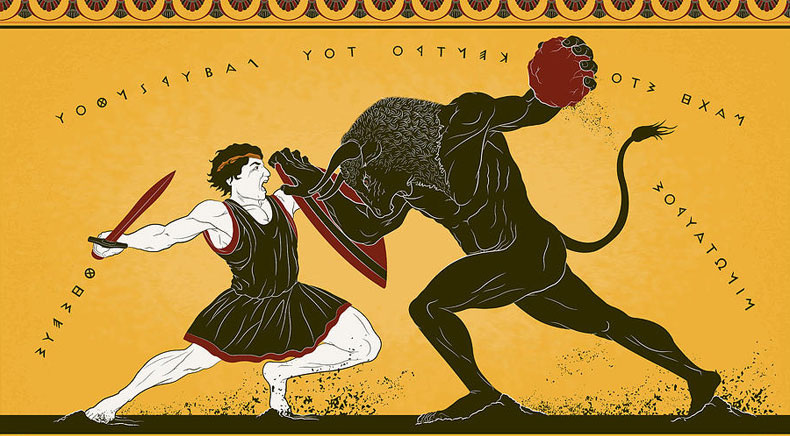
Take a look at the myths of Theseus in Greece – they embody the spiritual path. First, he defeats Procrustes and his bed – this represents false identity.
Second, he defeats the Minotaur, which symbolizes the animal nature, and escapes the labyrinth of the subconscious with the help of Ariadne’s thread – this is a spiritual practice of remembrance that awakens consciousness. He conquers the unconscious.
Daedalus also escapes the labyrinth, soaring above it on wings – representing exalted emotions.
Icarus, on the other hand, was greatly obsessed with exalted emotions, lost the sense of measure and reason, and perished.
Then he leaves Ariadne behind – this is a victory over identification and attachments.
He establishes democracy in the city, which means bringing order within himself, becoming the master of himself, and retreating into the cave – a symbol of the birth of the Higher Self, the transition to Nirvana.
Aegeus embodies the past that must be overcome, and he throws himself off the cliff into the sea – the past dies for the sake of a higher birth.
King Minos fails to sacrifice a bull to Poseidon, symbolizing the animal nature, and suffers as a result.
The beast within us – the Minotaur – constantly demands sacrifices, devouring people, representing the higher nature through negative emotions.
***
The person in the labyrinth of the Minotaur forgets the way back, and Ariadne’s thread is a spiritual practice for developing self-memory. We do not remember ourselves, and therefore, we cannot escape the labyrinth of the unconscious, of this life.
***
The labyrinth primarily exists in the mind and emotions of persons. However, they do not understand that they are in the labyrinth, they do not see that they have become entangled in the contradictions of ideas and feelings, in those “selves” that pull them in different directions, in the lies and the game of a sick imagination.
Until they realize their confusion and start seeking a way out, they will never escape the labyrinth and be doomed to wander there forever, sacrificed to the Minotaur.
But when they understand that they are trapped in the labyrinth of their inner world, it would be a mistake to search for an exit outside the labyrinth, in new ideas and impressions. The exit from the labyrinth is found at its center. It is there, where a person can dwell in detachment and silence, disidentifying from what they believed to be themselves and what was, in fact, the labyrinth of false identity.
When they, as consciousness, rise above everything they considered their memory of the past and personal history, they find their true self. That is the way out of the labyrinth.
The main obstacle to this is that, engrossed in any impression, the most banal thought, or negative emotion, they completely forget about this task. Therefore, they need “alarms” or those who will awaken them and remind them of this task. This is precisely the thread of Ariadne.

